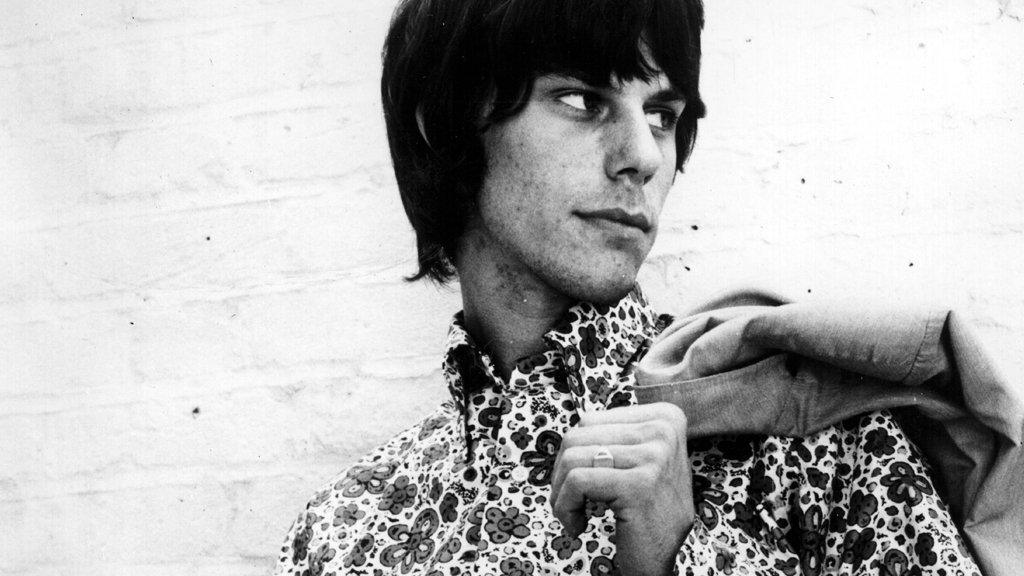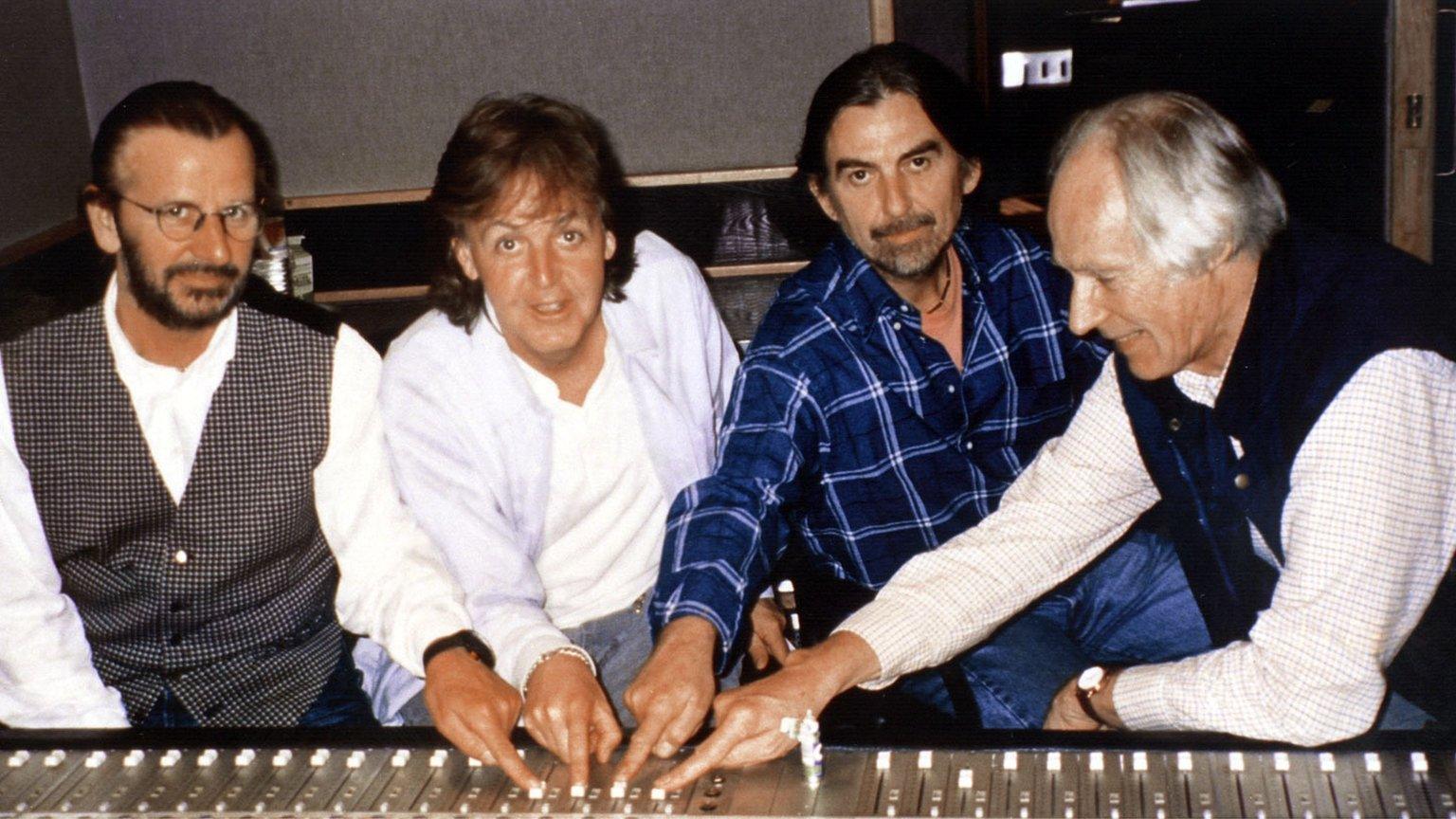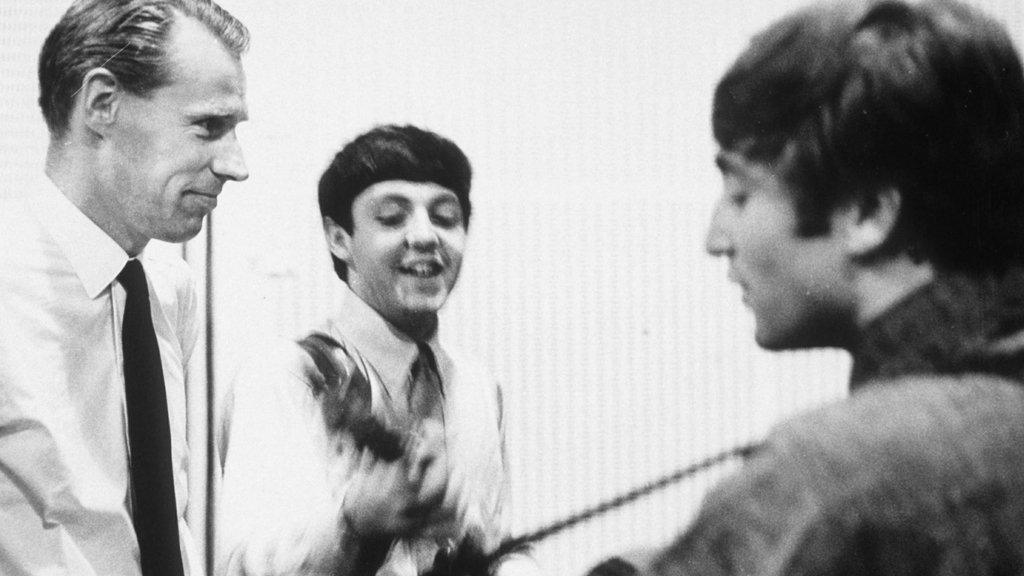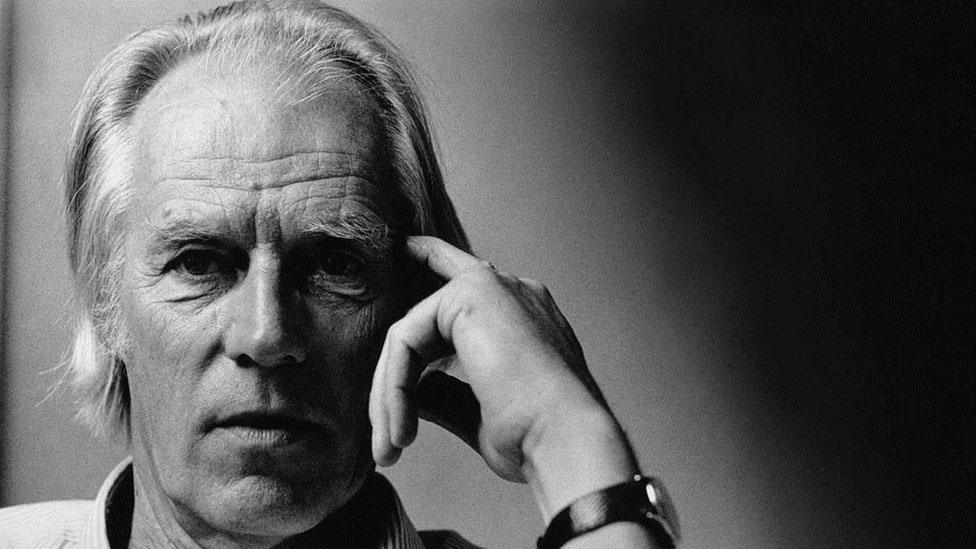Sir George Martin: Five of his most innovative songs
- Published

Sir George Martin pictured at the height of The Beatles' fame in 1965
Through his work with The Beatles, Sir George Martin became one of a handful of record producers who was as well known as the musicians he recorded.
Alongside Phil Spector and Brian Wilson, he helped push the boundaries of rock, opening new avenues of experimentation and using the studio itself as an instrument.
His willingness to take creative risks helped The Beatles stay one step ahead of the pack, and turned a skiffle band from Liverpool into one of the most innovative songwriting teams in popular music.
"The fascination of recording is that you really do have an unlimited range of musical colours to use," he once said. "That's one of the main reasons why I enjoyed working with the Beatles so much, because our success won me artistic freedom."
Here are a selection of his most ground-breaking records.
BERNARD CRIBBINS - RIGHT SAID FRED (1962)
Bura and Hardwick animation of Right Said Fred
Martin cut his teeth making comedy records - working with Peter Sellers, Dudley Moore and Peter Cook amongst others.
But his personal favourite was Bernard Cribbins' Right Said Fred, external, a farcical tale of two workmen trying (and failing) to force an upright piano into a building.
Martin took the simple song and illustrated it with sound effects - spines creaking, walls being demolished, springs springing.
"We had enormous fun doing those kinds of things," he recalled. "It was painting pictures in sound, and a jolly good apprenticeship for what I did later."
THE BEATLES - RAIN (1966)
Sir George Martin on recording The Beatles backwards
The B-side to Paperback Writer, Rain was The Beatles' first public attempt to capture the experience of an LSD trip on record.
Martin helped the band recreate the sense of detachment and dissonance by recording the basic track at a faster tempo, then slowing it down to alter the frequencies of their instruments.
After they left the studio, he duplicated a section of John Lennon's vocals and ran the tape backwards, creating a disorientating, surreal fade-out.
"From that moment they wanted to do everything backwards," said Martin. "They wanted guitars backwards and drums backwards, and everything backwards, and it became a bore."
The technique has been replicated ever since by bands looking to add a sense of mysticism to their recordings.
THE BEATLES - ELEANOR RIGBY (1966)
While The Beatles were accomplished musicians and songwriters, none of them possessed the classical training of their producer (a graduate of the Guildhall School of Music). As a result, Martin was often asked to flesh out the band's songs with string arrangements and contrapuntal melodies.
Perhaps his most famous contribution is the staccato, almost aggressive string section on Eleanor Rigby.
Paul McCartney has asked for something in the style of Vivaldi, but Martin based his arrangement on Bernard Herrmann's score for Psycho.
"He had a way of making violins sound fierce," he told Wall Street Journal reporter Marc Myers, external. "That inspired me to have the strings play short notes forcefully, giving the song a nice punch. If you listen to the two, you'll hear the connection."
In the studio, Martin instructed engineer Geoff Emerick to place the microphones unusually close to the instruments, so you could hear the scratch of the bow on the strings.
"The musicians hated it," Emerick said. "You could see them sort of keep slipping back on their chairs to get away from the mic in case they made any errors."
The caustic timbre changed the perception of what a string section could add to a rock record. A direct line can be traced from Eleanor Rigby to Led Zeppelin's Kashmir and Paul McCartney's bombastic Bond theme Live And Let Die (also produced by Martin).
THE BEATLES - STRAWBERRY FIELDS FOREVER (1966)
John Lennon: "He had a very great musical knowledge and background so he could translate for us"
Having retired from touring in early 1966, The Beatles were suddenly free to record at their leisure. While their debut album was recorded in a single day, Strawberry Fields Forever developed from John Lennon's simple guitar demo over a period of several weeks - a process you can track on the Anthology compilation album.
All of the band contributed to the song's unique sound - Ringo Starr draped towels over his drum kit to produce a strange, muffled sound; George Harrison played the Indian svarmandal; while Paul McCartney wrote the famous Mellotron flute intro.
But after the eighth day of recording, Lennon was still unsatisfied - wanting to keep the opening of the final take (Take 26) and the second part from another, recorded the previous week (Take 7).
He suggested that Martin somehow combined them, despite the fact they were in different keys and different tempos.
"You can do something about it," Lennon said. "You can fix it."
Martin and his engineer Geoff Emerick took up the challenge, speeding up one version and slowing down the other so that they matched in tempo. The edit is only detectable by a slight change in ambience around the one-minute mark - an effect which only adds to the song's sense of dislocation.
These days, almost every singer stitches together their vocals from multiple takes, but Martin and Emerick had proved such edits were possible on a humble four-track tape machine.
JEFF BECK - DIAMOND DUST (1975)

"Don't touch Jeff Beck, he's a loser," Martin was told by a senior music industry figure in 1974 - but the producer was defiant, replying: "No, I think he's a great guitar player. I'd always admired his playing enormously, and I knew his work well."
Producing the former Yardbird guitarist required a much more hands-off approach than Martin was used to.
"He [Beck] is a gut player," the producer told BBC 6 Music. "Sometimes he would play badly. Nothing would come and he would get very angry with himself. But other times he [could] sit down with a battered guitar and make the most incredible sounds."
"All I was able to do was work around that. Be the critic, take the best bits, then work around it."
Their first album together, Blow By Blow, practically invented the genre of jazz-rock fusion; and guitarists like Joe Satriani and Steve Vai owe their careers to the atmospheric, eight-minute closing track, Diamond Dust (written by Bernie Holland).
The record saw Martin develop into a modern producer - acting as a sounding board and facilitator, rather than a full-blown collaborator.
"George is almost like a dad: Relaxed, very focused on the sound," said Beck. "He was probably the best producer I've had. The guy who could framework what I was doing without interfering."
"Tact is one of the absolute requirements of a record producer," Martin agreed. "It's no good bullying people because they dig their heels in and do the opposite.
"And if you do have a good idea, try and make them think of it."

Related topics
- Published9 March 2016

- Published9 March 2016

- Published9 March 2016

- Published9 March 2016
